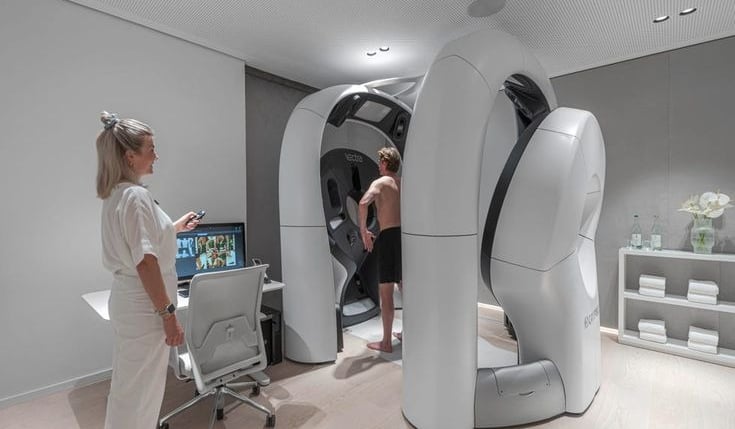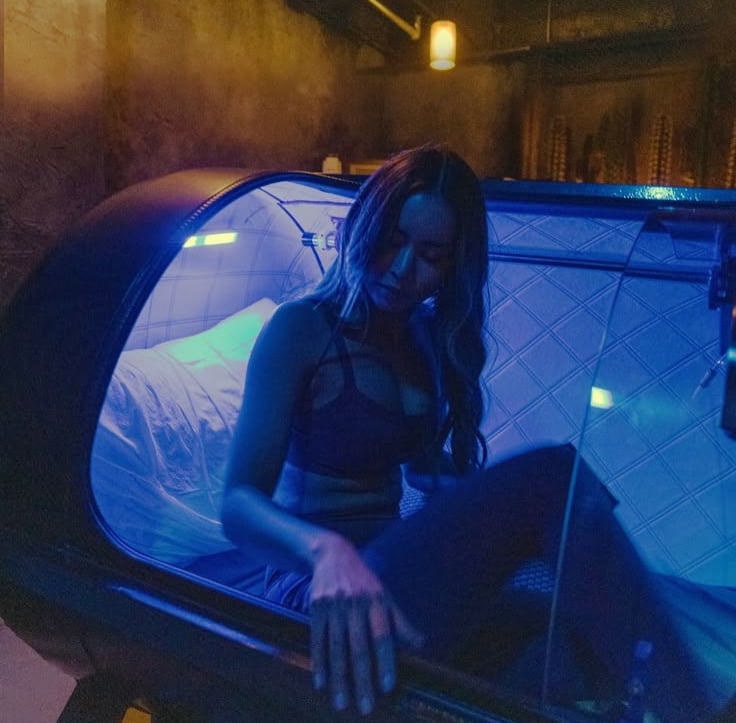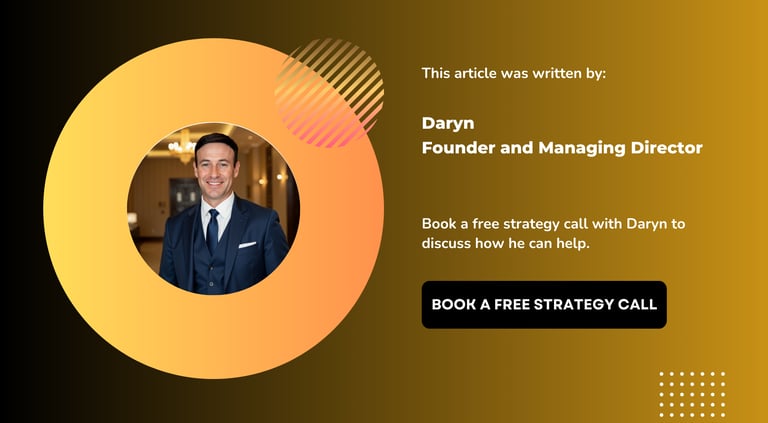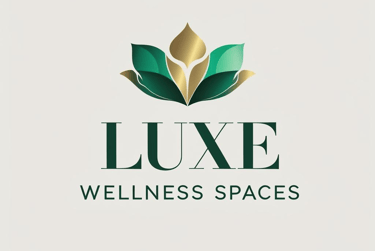The Future of Investment in Hospitality - Longevity Clinics
Uncover why longevity clinics with IV therapy and hyperbaric chambers are reshaping luxury hospitality ROI and guest loyalty.
Daryn Berriman
10/22/20258 min read


Longevity clinics are medical wellness facilities integrated into hotels and resorts that offer services like IV nutrient therapy, hyperbaric oxygen treatment, and advanced diagnostics to extend healthspan. Properties adding longevity services report 18 to 34 percent higher RevPAR and attract guests willing to pay premium rates for multi-day wellness programs. This shift transforms hospitality from accommodation into a health destination model that appeals to high-net-worth travelers seeking preventative medicine.
Five Key Facts:
The global medical wellness tourism market reached $139 billion in 2024 and is projected to grow at 16.4% annually through 2030 (Grand View Research, March 2024)
Resorts with longevity programs achieve average daily rates 40 to 65 percent above comparable properties without medical wellness offerings (Wellness Real Estate Association, January 2025)
Hyperbaric oxygen therapy bookings at luxury resorts increased 210% year-over-year in 2024 (Spafinder Wellness, November 2024)
Guests at longevity-focused properties stay an average of 5.2 nights compared to 2.8 nights at traditional luxury hotels (Global Wellness Institute, October 2024)
Investment in longevity clinic infrastructure delivers payback periods of 14 to 22 months when integrated into existing wellness facilities (Horwath HTL, December 2024)
Your guests are no longer asking for better pillows. They want biomarker testing, NAD+ infusions, and oxygen chambers. The hospitality sector is watching medical wellness shift from niche spa add-on to core revenue driver, and properties without a longevity strategy, risk obsolescence in the luxury market.
What Makes Longevity Clinics Different
Longevity clinics go beyond massage tables and facials. These are clinical environments inside your property staffed by licensed medical professionals who deliver evidence-based interventions designed to slow aging and optimize cellular function. The core offerings include intravenous nutrient therapy, hyperbaric oxygen chambers, genetic testing, blood analysis, peptide therapy, and personalized supplementation protocols.
The business case is straightforward. A 150-room resort that dedicates 2,000 square feet to a longevity clinic can generate $800,000 to $1.4 million in annual revenue from services alone, not counting the premium room rates guests pay for access. Treatments range from $250 for a basic IV drip to $12,000 for week-long diagnostic and optimization programs. Unlike traditional spa services where labor costs eat 45 to 55 percent of revenue, longevity clinics run at 30 to 38 percent labor costs because treatments require less hands-on time per guest.
Case Study: Carillon Miami Wellness Resort
Carillon Miami installed hyperbaric chambers and an IV therapy suite in 2022. Within eighteen months, the property reported a 23 percent increase in length of stay and captured guests from the medical tourism sector who previously flew to Switzerland or Mexico for similar treatments. Their longevity packages, priced at $4,500 to $9,000 per person for three to seven nights, now represent 31 percent of total room nights. The property invested $420,000 in equipment and licensing and recovered costs in sixteen months.
Not everyone believes hospitality should pivot toward medical services. Critics argue that introducing clinical environments into resorts compromises the relaxation factor guests expect. There is also regulatory complexity. Offering medical services requires licensed physicians, liability insurance updates, and compliance with health authority oversight that traditional hoteliers are not equipped to manage. Some operators find that guests perceive IV drips and oxygen therapy as intimidating rather than aspirational, particularly in leisure-focused markets where wellness means yoga and green juice, not blood tests.
The counterpoint: position longevity services as optional premium experiences for a segment of your market, not a property-wide mandate. A dedicated clinic wing keeps medical environments separate from leisure spaces.
Your Longevity Clinic Planning Checklist
Before committing capital, work through these steps:
Identify your target guest profile: Are you attracting biohackers, aging executives, athletes, or general wellness seekers?
Assess local regulations: What medical licensing and supervision does your jurisdiction require?
Calculate space needs: A functional longevity clinic requires minimum 1,500 square feet for treatment rooms, equipment, and waiting area.
Partner with licensed medical director: You cannot operate without physician oversight in most markets.
Train existing spa staff: Cross-training your wellness team reduces labor costs and creates care continuity.
Build referral relationships: Connect with local physicians, functional medicine practitioners, and wellness influencers.
Price for value: Longevity guests expect to invest in their health. Do not undercut positioning with discount pricing.
Create multi-day packages: Length of stay drives profitability. Bundle treatments into three, five, or seven-night experiences.


Want to test guest interest before investing?
Survey your current guests: Add one question to checkout asking if they would book IV therapy, hyperbaric oxygen, or advanced wellness diagnostics during their stay.
Research three competitor properties: Identify resorts in your market or segment that already offer longevity services. Note their pricing, package structure, and positioning.
Calculate potential revenue: Multiply your average occupancy by 15 percent (conservative early adoption rate) and estimate $600 average spend per longevity guest. This gives you first-year revenue potential.
Common Mistakes and Fixes
Mistake: Treating longevity clinic as a spa amenity instead of a medical business.
Fix: Establish separate operations, pricing, and marketing. Longevity guests are buying health outcomes, not relaxation.
Mistake: Underestimating regulatory requirements and getting shut down after launch.
Fix: Hire a healthcare compliance consultant before designing your facility. Regulations vary by country and region.
Mistake: Installing equipment without trained operators.
Fix: Budget for a minimum of six months of training and certification for staff. Equipment without expertise creates liability, not revenue.
Mistake: Marketing longevity services to leisure travelers who want beach time, not blood work.
Fix: Segment your marketing. Target health-conscious professionals, biohackers, and medical tourists through dedicated channels.
Glossary of Longevity Terms
Hyperbaric Oxygen Therapy (HBOT): Treatment where guests breathe pure oxygen in a pressurized chamber to increase oxygen delivery to tissues, supporting cellular repair and reducing inflammation.
IV Nutrient Therapy: Intravenous administration of vitamins, minerals, and compounds like glutathione or NAD+ to bypass digestion and deliver nutrients directly to cells.
Biomarker Testing: Laboratory analysis of blood, saliva, or urine to measure biological indicators of aging, disease risk, and metabolic function.
NAD+ (Nicotinamide Adenine Dinucleotide): Coenzyme involved in cellular energy production and DNA repair. NAD+ levels decline with age and IV supplementation is popular in longevity protocols.
Peptide Therapy: Use of short chains of amino acids to trigger specific biological responses like tissue repair, immune function, or hormone optimization.
Healthspan: The period of life spent in good health, free from chronic disease and disability, as opposed to lifespan which measures total years lived.
Functional Medicine: Medical approach that addresses root causes of disease through personalized interventions based on genetics, lifestyle, and environment rather than symptom management alone.
Red Light Therapy: Exposure to specific wavelengths of red and near-infrared light to stimulate mitochondrial function, reduce inflammation, and support skin health.
Cryotherapy: Brief exposure to extreme cold to reduce inflammation, support recovery, and potentially trigger beneficial metabolic responses.
Telomere Testing: Measurement of protective caps on chromosomes that shorten with age, used as biomarker of biological aging versus chronological age.
The longevity clinic opportunity will not wait. Early adopters are capturing market share while regulatory frameworks remain relatively accessible. Properties that move now gain first-mover advantage in their markets and build the medical partnerships and brand authority that take years to establish.


FAQ's
What is the typical investment required to add a longevity clinic to an existing hotel or resort?
Initial investment ranges from $250,000 to $850,000, depending on scope. A basic setup with two IV therapy suites and one hyperbaric chamber costs approximately $250,000 to $400,000, including equipment, licensing, and facility modifications. Comprehensive clinics with diagnostic labs, multiple treatment rooms, and advanced equipment reach $600,000 to $850,000. These figures exclude ongoing costs like medical staff salaries, supplies, and insurance. Most operators see payback within 14 to 24 months based on 2024 industry performance data.
Do longevity clinics require medical staff on-site full-time?
Regulatory requirements vary by jurisdiction, but most markets require a licensed physician to serve as medical director with on-site presence during treatment hours or immediate availability for oversight. Many properties use a hybrid model with a medical director who visits two to four times weekly and supervises nurse practitioners or registered nurses who administer treatments. Budget for a minimum of one full-time equivalent clinical staff member per treatment room, plus medical director fees of $8,000 to $15,000 monthly, depending on involvement level and market.
Which longevity treatments generate the highest ROI for hospitality properties?
IV nutrient therapy consistently delivers strongest margins at 65 to 72 percent gross profit because treatment time is 30 to 90 minutes with minimal hands-on staff involvement after insertion. Hyperbaric oxygen therapy follows at 58 to 65 percent margins with sessions typically 60 to 90 minutes. Multi-day diagnostic and optimization packages priced at $4,000 to $12,000 per person drive the highest absolute revenue per guest and extend length of stay, which amplifies room revenue, food and beverage, and additional amenities spending.
How do guests respond to medical treatments in a hospitality setting?
Guest reception depends heavily on positioning and market segment. Properties that frame longevity services as preventative health optimization and performance enhancement see adoption rates of 15 to 28 percent among guests. Facilities that emphasize the clinical or medical aspect often intimidate leisure travelers and see lower uptake. Successful operators create distinct physical spaces that feel like premium wellness environments rather than hospital settings, use lifestyle-focused marketing language, and train staff to present treatments as enhancement rather than treatment of illness.
What are the main regulatory hurdles for adding longevity clinics?
The three primary regulatory considerations are medical licensing, facility standards, and liability coverage. You must secure appropriate medical facility licenses, ensure your medical director and treating clinicians hold valid credentials in your jurisdiction, and meet health department requirements for clinical spaces, including air filtration, sanitation protocols, and medical waste disposal. Liability insurance premiums increase significantly when offering medical services. Work with healthcare compliance attorneys and insurance specialists who understand medical spa and hospitality crossover before finalizing plans.
Can existing spa facilities be converted to longevity clinics or does it require new construction?
Many properties successfully convert existing spa space with modifications rather than building new. Key requirements include private treatment rooms with locking doors for medical privacy, proper ventilation for hyperbaric chambers, medical-grade cleaning capacity, secure storage for controlled substances if offering peptide therapy, and separation from high-humidity areas like steam rooms or pools that can damage equipment. Budget $40,000 to $120,000 for renovations to convert 1,500 to 2,500 square feet of existing spa into compliant longevity clinic space.
What is the ideal size property to support a longevity clinic?
Properties with 80 to 100 rooms or more typically generate sufficient guest volume to sustain a longevity clinic at profitable utilization rates. Smaller boutique properties with 40 to 80 rooms can succeed if they position longevity as a primary draw and market regionally to attract day guests and local members in addition to overnight visitors. The key metric is total annual guest nights. Properties delivering 20,000 or more guest nights annually usually support viable longevity operations. Urban properties and destination resorts with strong local wellness communities can operate successfully at smaller scale than isolated resort locations.
How should longevity services be priced relative to traditional spa treatments?
Longevity treatments command premium pricing because guests perceive medical and scientific value beyond relaxation. IV therapy typically prices at $200 to $450 per session, hyperbaric oxygen at $150 to $350 per session, and comprehensive multi-day programs at $3,500 to $12,000 per person. These rates are 150 to 300 percent higher than comparable time spent in traditional spa treatments. Avoid discounting or bundling longevity services with standard spa packages in ways that diminish perceived value. Position as separate premium offering with its own booking channel and marketing.


References
Global Wellness Institute - Medical wellness tourism statistics and guest behavior data
https://globalwellnessinstitute.orgGrand View Research - Medical wellness market size and growth projections
https://www.grandviewresearch.comSpafinder Wellness - Treatment booking trends and consumer demand analysis
https://www.spafinder.comWellness Real Estate Association - Revenue benchmarks for wellness properties
https://wellnessrealestate.orgHorwath HTL - Investment returns and feasibility analysis for hospitality wellness
https://www.horwathhtl.com
By Daryn Berriman - Principal Wellness Business Consultant. Last Updated 2025.10.22.
Further reading on our blog: 'How to Transform Your Gym Into a Longevity Center'
• Explore our Spa & Wellness Consultancy to scope project phases and services.
• See how we structure Fitness and Leisure concepts before you commit to equipment.
• Developers and luxury homeowners can review Home Wellness Spaces for private suites and villas.
• Learn why Luxe Wellness Spaces blends design, operations, and growth under one roof.
• View a Concept-to-Launch case study that hit break-even in 90 days.


